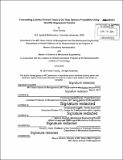| dc.contributor.advisor | Yanchong Karen Zheng and Christopher Caplice. | en_US |
| dc.contributor.author | Truong, Gold | en_US |
| dc.contributor.other | Leaders for Global Operations Program. | en_US |
| dc.date.accessioned | 2014-10-08T15:26:54Z | |
| dc.date.available | 2014-10-08T15:26:54Z | |
| dc.date.copyright | 2014 | en_US |
| dc.date.issued | 2014 | en_US |
| dc.identifier.uri | http://hdl.handle.net/1721.1/90751 | |
| dc.description | Thesis: M.B.A., Massachusetts Institute of Technology, Sloan School of Management, 2014. In conjunction with the Leaders for Global Operations Program at MIT. | en_US |
| dc.description | Thesis: S.M., Massachusetts Institute of Technology, Department of Mechanical Engineering, 2014. In conjunction with the Leaders for Global Operations Program at MIT. | en_US |
| dc.description | Cataloged from PDF version of thesis. | en_US |
| dc.description | Includes bibliographical references (page 85). | en_US |
| dc.description.abstract | with delays on the road and variabilities introduced by the major participants in the process, ie: distribution centers, drivers, etc. These sources of variability also make it difficult to measure the impact changes in transit time have on on-time performance. This paper focuses on trying to identify indicators of variability and incorporates them into quantile regression forest, a black box forecasting model, that will provide estimated scheduled transit times for a given probability of on-time arrival at the destination. With the use of Amazon's Q1 & Q2 2013 linehaul data, an analysis on performance trends based on length of haul were categorized to develop an understanding linehauls in North America. The outbound transportation team at Amazon faces the complex trade off between providing a sufficient amount of scheduled transit time to ensure ontime delivery to destination and the utilization rate of a truck. The ability to quantify how changes in scheduled transit time impact the performance of a particular linehaul allows transportation managers to assess this trade off. The paper explores a machine learning regression technique called quantile regression forests. The model was developed in R using the quantregforest package. It incorporates numerous factors about linehaul including: origin, destination, historical reporting on sources of late to arrivals, time to depart from origin and time of departure. The strengths of this black box model are in its ability to handle a large amount of data and continuously update its predicting structure to provide more accurate recommendations. Quantile regression forests also enable the user to specify the ontime performance percentage, p, that he/she wants the model to predict based on historical data. The final model at p = 95% provided a weight mean absolute percent error of 4.57% and a root mean square error of 2.22%. A four-week pilot was conducted to validate these predictions and the results are discussed. | en_US |
| dc.description.statementofresponsibility | by Gold Truong. | en_US |
| dc.format.extent | 85 pages | en_US |
| dc.language.iso | eng | en_US |
| dc.publisher | Massachusetts Institute of Technology | en_US |
| dc.rights | M.I.T. theses are protected by copyright. They may be viewed from this source for any purpose, but reproduction or distribution in any format is prohibited without written permission. See provided URL for inquiries about permission. | en_US |
| dc.rights.uri | http://dspace.mit.edu/handle/1721.1/7582 | en_US |
| dc.subject | Sloan School of Management. | en_US |
| dc.subject | Mechanical Engineering. | en_US |
| dc.subject | Leaders for Global Operations Program. | en_US |
| dc.title | Forecasting linehaul transit times & on time delivery probability using quantile regression forests | en_US |
| dc.title.alternative | Forecasting line haul transit times and on-time delivery probability using quantile regression forests | en_US |
| dc.type | Thesis | en_US |
| dc.description.degree | M.B.A. | en_US |
| dc.description.degree | S.M. | en_US |
| dc.contributor.department | Leaders for Global Operations Program at MIT | en_US |
| dc.contributor.department | Massachusetts Institute of Technology. Department of Mechanical Engineering | |
| dc.contributor.department | Sloan School of Management | |
| dc.identifier.oclc | 891367991 | en_US |
